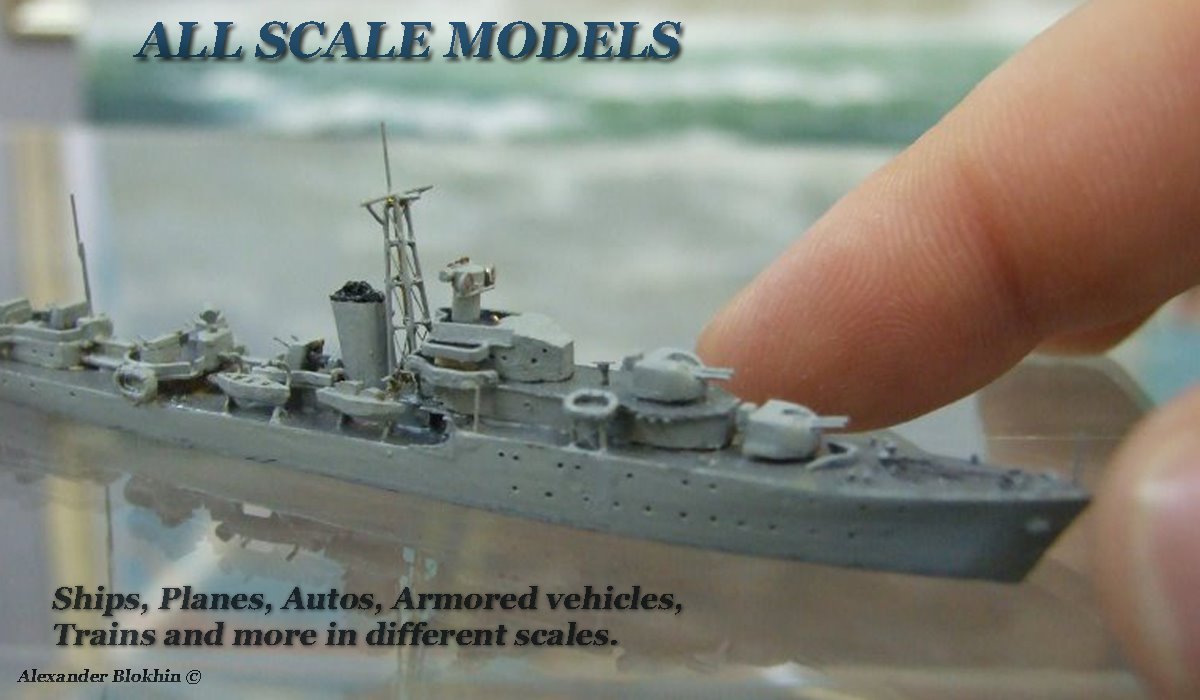Dragon
1:72
Is there any aircraft modeler who doesn’t know about the Mig-15? Basing their design on captured German material, the Russian MiG Bureau’s famous Mig-15 first flew on the power of a British Neme jet engine, a number of which were exported to the USSR in 1947. Production aircraft first met USAF F-86 Sabres in the skies over Korea as the first true jet fighter combatants. Enormous numbers of Mig-15s (and the improved Mig-15bis) were built, the type serving in dozens of different airforces.
About Me

- Alexander Blokhin
- "With 30 years of modelling experience, Alexander Blokhin is recognized as one of the leading experts in this fascinating art. His models can be admired at many maritime museums. Lucky collectors won pieces of art who were built on commission. A painter and master carver who brings his unique gifts to his work, Blokhin produces works of art that excite. From a diorama of an Indian ocean Dhow to the "Titanic", from a Greek Trireme to Drake`s "Golden Hind". His vast and scholar knowledge of maritime history assures authenticity of the model down to the last tiniest detail. Whether he builds a shiny quot "just launched" or a weathered version of the boat or ship, it is love at first sight and a treasure to cherish and enjoy for many long years." --- Meir Ben-Zeev MHVC & MHC
scale models resurs

Friday, May 23, 2008
Mig-15 Fagot
Supermarine Spitfire Mk. XIV





Academy
1:72
The first Griffon powered Spitfires suffered from poor high altitude performance due to having only a single stage supercharged engine. By 1943 Rolls-Royce engineers had developed a new Griffon engine, the 61 series, with a two-stage supercharger. In the end it was a slightly modified engine, the 65 series, which was used in the Mk XIV. The resulting aircraft was as great an improvement over the Mk IX as the Mk IX had been over the Mk V. Although initially based on the Mk VIII airframe, common improvements made in aircraft produced later included the cut-back fuselage and tear-drop canopies, and the E-Type wing with improved armament.
It could climb to 20,000 ft (6,100 m) in less than seven minutes and its top speed, which was achieved at 26,000 ft (7,900 m), was 448 mph (721 km/h)
The first test of the aircraft was in intercepting V1 flying bombs, and the Mk XIV was the most successful of all Spitfire marks in this role. The Spitfire XIV was also famous for being able to catch the notorious German jet, the Messerschmitt 262.The Mk XIV was used by the 2nd Tactical Air Force as their main high-altitude air superiority fighter in northern Europe.
Supermarine Spitfire Mk.VB



1:48
Hasegawa
This was the first production version of the Spitfire to use "clipped" wingtips as an option, reducing the wingspan to 32 ft 2 in (9.8 m). The clipped wings increased the roll rate at lower altitudes.




Thursday, May 22, 2008
Rolls Royce “Torpedo Phantom II Convertible” 1934
1:24 scale plastic kit from ITALERI
A one-of-a kind car, this particular auto was built in 1934 specifically for the Rajkot Maharajah, to replace his 1908 Silver Ghost The flamboyant torpedo way was constructed by Thrupp & Mabertey, an outstanding English coach builder and has highly polished aluminum wings and bonnet when as the rest of the body is colored saffron, a color that has religious significance in India. The Maharajah's logo displayed on the doors and windows contains his motto: "Dharm praja reja" (an imperial ruler of all men of all faiths). Also, the two Rolls Royce crossed R badges have the black color scheme in honor of Sir Henry Royce' who died at the time the car was constructed. This famous Phantom II has taken part in many rallies throughout Europe and has been constantly jud-ged the most outstanding vehicle.
More information of a model --
http://www.modellversium.de/kit/artikel.php?id=3512
Wednesday, May 21, 2008
Vosper Fast Patrol Boat Perkasa








Tamyia`s a great high-quality model 1:72 scale.
Vosper & Company was a British shipbuilding firm founded in 1871 and came to specialize in small craft. During WWII, the company became well known for their motor torpedo boat designs. After the war, Vosper continued to develop small fast patrol craft, one of which was the Brave Class. These boats were equipped with 3 Bristol Proteus engines, which powered the boat to top speeds of over 50 knots. They were armed with one 40mm Bofors cannon, two 20mm Oerlikon cannons, and four torpedoes. The Perkasa was one of several Brave Class boats exported to the Royal Malaysian Navy.
Tuesday, May 20, 2008
Wright Flyer




Museum quality model in 1:3 scale for the Museum of Technologies, Haifa.
Model by Alexander & Inna Blokhin
The Wright Flyer (often retrospectively referred to as Flyer I and occasionally Kitty Hawk) was the first powered aircraft designed and built by the Wright brothers. The flight is recognized by the Fédération Aéronautique Internationale, the standard setting and record-keeping body for aeronautics and astronautics, as "the first sustained and controlled heavier-than-air powered flight"
Text: Wikipedia



















